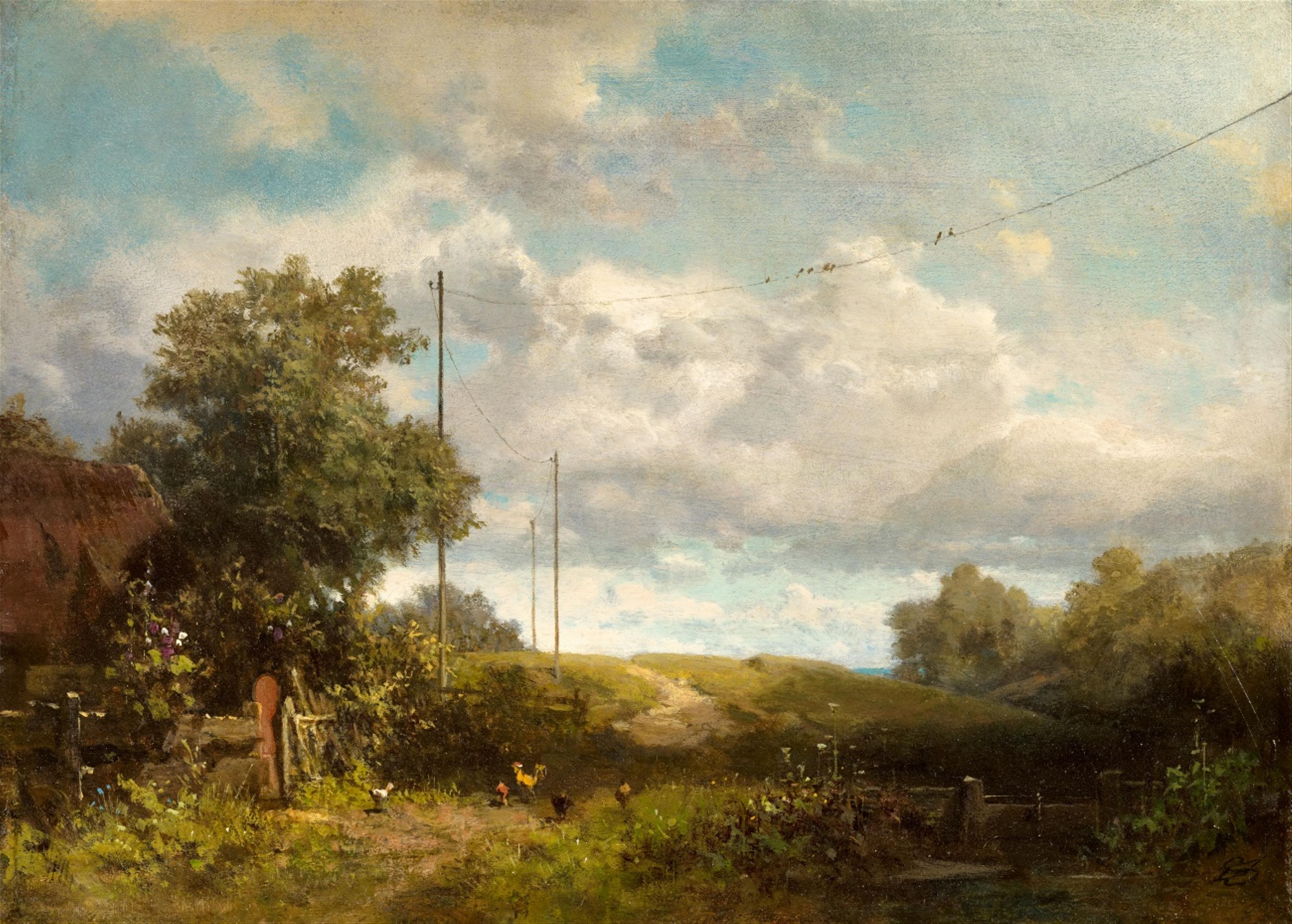Carl Spitzweg
Landscape with Swallows
Oil on panel (parquetted). 21 x 28.5 cm.
Monogrammed lower right: S in a rhombus.
Carl Spitzweg was first able to devote himself fully to painting after completing his training as a pharmacist. Since he abstained from visiting the academy in Munich, his meeting with the slightly younger Eduard Schleich (1812-1874) provided him not only with a good friend, but also a valuable tutor in landscape painting. Spitzweg swapped this work with Schleich for one of his own works. Following Schleich's death, the painting was passed to his son, also named Eduard Schleich, who sold it to a German collector in 1913. The descendants of this collector are now offering the work on the market again for the first time in 100 years.
With his early works, such as the legendary “Poor Poet” from 1837, Spitzweg established himself as an intelligent analyst of society. His small-format genre pieces present Biedermeier idylls finely laced with ironic commentary and subtle social criticism. In his later works, Spitzweg began to concentrate more on landscape painting, inspired by Schleich, who was one of the initial proponents of plein aire painting in Germany. Spitzweg took numerous sojourns with his friend Schleich, for example to Paris in 1851, where they came into contact with the works of the Barbizon school. This new style had a significant impact on both artists, and after the trip Spitzweg's painting became ever more open and light, and leant more heavily towards Impressionism. His light-flooded landscapes of this later period contain little to no figures and instead focus on light and natural phenomena.
Siegfried Wichmann dates the present work “Landscape with Swallows” to around 1865/70. Three telegraph poles snake through the landscape, with the wire leading from the right edge to the centre and providing a perch for the swallows that give this piece its name. The telegraph was a relatively new invention at the time this work was painted, and a widespread telegraph connection was only achieved in Germany in the mid-19th century. This interesting motif only appears three times in Spitzweg's œuvre. The other versions of this motif bear the same approximate dimensions and can be found in the Museum Georg Schäfer in Schweinfurt and the Erfurt Angermuseum.
Provenance
Eduard Schleich the Elder (exchanged with Spitzweg for one of his own pieces). - Eduard Schleich the Younger. - Purchased 16.04.1913 by a private collector. - Henceforth by descent in private ownership.
Literature
Günther Roennefahrt: Carl Spitzweg. Beschreibendes Verzeichnis seiner Gemälde, Ölstudien und Aquarelle, Munich 1960, p. 161, no. 248, illus. - Siegfried Wichmann: Carl Spitzweg. Verzeichnis der Werke. Gemälde und Aquarelle, Stuttgart 2002, p. 381, no. 890, illus.

